Written By: Chevron
Whether you’re aiming to make your high school swim team or a local club team, tryouts can be nerve-wracking and stressful. Knowing how to prepare for swim team tryouts can help reduce your anxiety.
Related article: How to Calm Down Before Swim Tryouts
As a current competitive swimmer and with 20 years of swimming experience, these are the 10 tips I give aspiring swimmers to help them prepare for swim team tryouts.
Disclosure: This post may contain affiliate links, meaning we earn a small commission at no cost to you if you purchase something through one of our links. As an Amazon Associate, we earn from qualifying purchases. Please check out our disclosure page for more information.
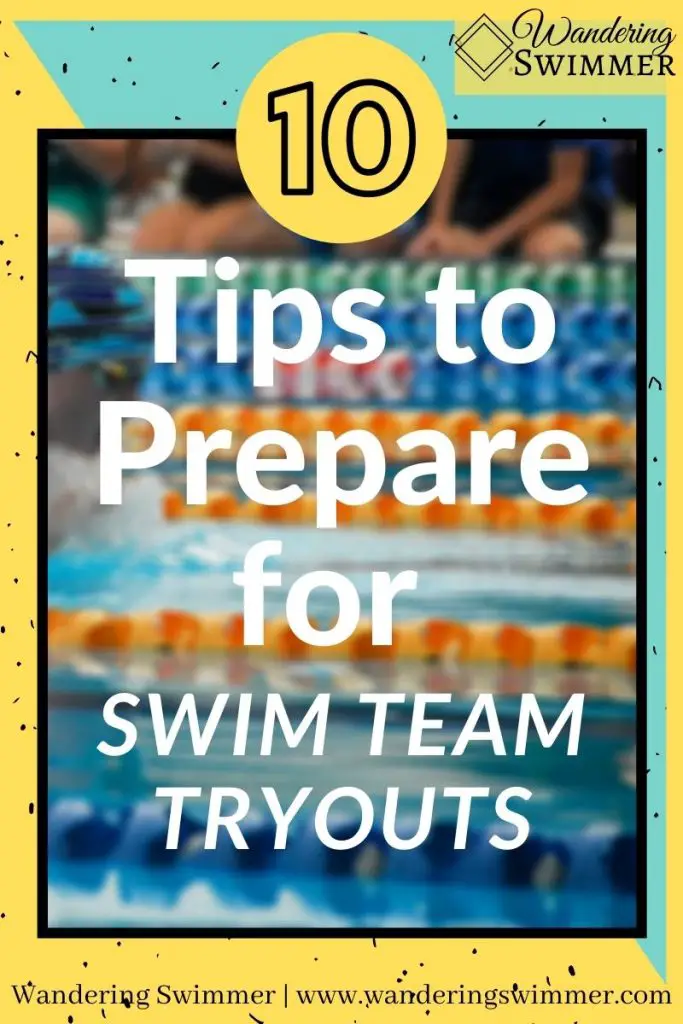
- 1. Talk to Someone on the Team
- 2. Get Tryout Information From the Coach
- 3. Know What the Swim Team Requires
- 4. Start swimming!
- 5. Practice All Four Strokes
- 6. Do Simple Dryland
- 7. Don’t Be Late
- 8. Show Up Early
- 9. Be Aware of Your Nutrition
- 10. Have the Proper Gear
- Bonus Advice!
- What to Expect at a Swim Tryout
- Bonus Content:
- Want to Improve at the Pool?
1. Talk to Someone on the Team
If you can, talk to someone on the team. Whether that’s the coach themselves or a another swimmer. Both know how the team operates and what practices are like.
I’ve had several parents and aspiring swimmers ask me what swim practices are like and what it’s like to be on a swim team. And I know I wish I talked to someone on the team before joining.
Knowing even some basic information about the team can help you understand what you’re getting into. However, take any advice with some caution.
What one swimmer might consider ‘easy’ could actually be challenging for you. Or vice versa. Just as remember that every group or level is different. It’s best to also ask a current swimmer how long they’ve been swimming and what their times are in their events. This can help you gauge their skill set to yours.
Related article: Swim Practice Terminology

Want to Improve at the Pool?
Join swimmers and swim parents to receive my free newsletter and receive a free Swimming Glossary e-book as a thanks!
Every month you’ll receive tips and coaching to help you find success at the pool.
2. Get Tryout Information From the Coach
The best way to do this is to talk with the coach in advance so you can start training. You will also need to make sure you know when and where tryouts will be held. It doesn’t do you any good if you train for tryouts only to miss them!
If tryout information isn’t available online, talk to the coach directly, and write down the information.
You’ll also want to check if the team has any paperwork or forms that you need to complete before tryouts. School teams typically require that you meet eligibility requirements, such as having a physical completed or having emergency contact information.
3. Know What the Swim Team Requires
In addition to knowing when and where tryouts are, you should also know what the swim team requires.
Will you need to provide your own equipment for practice? If so, what gear will you need to purchase? This can range from swimsuits, team warm-ups, caps, goggles, etc. This can be an extra cost that you’re not expecting, so be sure to get a thorough understanding before committing.
I also recommend asking about the logistic side of swim team. My team trained away from my high school, which meant my parents had to drop me off and pick me up every practice.
If you train away from the school, a few questions would be:
- How do you get to school from morning practice?
- How do you get to afternoon practice?
- Where are pick up and drop off locations?
- Can your schedule allow for the practices where you have to drop off/pick up? Or can you coordinate a carpool with other swimmers?
4. Start swimming!
Once you know for sure that you want to join a swim team, start swimming!
Find a pool that you can train at and get to work practicing. Look at joining a summer league teams over the summer. They’ll help you practice the various strokes and get you accustomed to training with other swimmers.
This is what I did before joining a swim team! It taught me all I needed to know about swimming. Perhaps most importantly, it gave me the confidence going into tryouts that I wouldn’t have had if I didn’t practice over the summer.
Related articles:
No matter where you decide to swim, just make sure you start swimming. If possible, try to train daily for at least 30 minutes to an hour.
5. Practice All Four Strokes
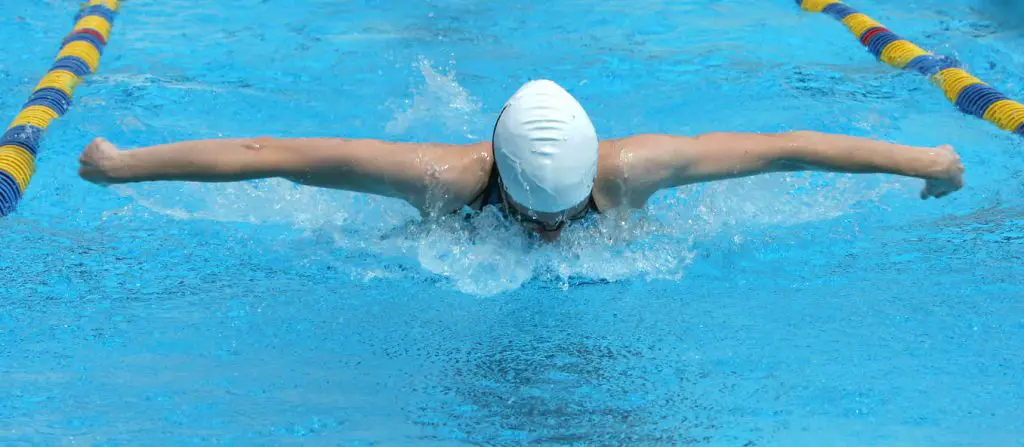
You don’t have to be perfect in them, but you should at least attempt each stroke. The four competitive strokes in swimming are:
- Butterfly
- Backstroke
- Breaststroke
- Freestyle
Freestyle and backstroke are probably the easiest for newer swimmers. Whereas breaststroke and butterfly are a bit more challenging. Don’t let that stop you though!
Ask another swimmer to watch your strokes and ask for their advice. You can also look at hiring a personal coach for a few weeks to help you get the basics down. I’ve also had parents take videos of their kids swimming and have me offer advice based on the video or picture.
6. Do Simple Dryland
Dryland is weightlifting, strength training, and agility/flexibility exercises that swimmers do outside of the pool. While you probably won’t need to demonstrate any dryland skills, it can help add to your swim workouts.
Related article: What is Dryland?
I recommend doing some simple, bodyweight exercises to strengthen your muscles. This will not only strengthen your muscles, but it’ll also reduce the risk of injury. Especially if you’ve never lifted before.
Exercises such as push up, crunches, planks, squats, jumping jacks, and squat jumps are ideal dryland exercises and I recommend them all the time to aspiring swimmers and even lap swimmers.
The best part? You can do all of these at home and without the need for gym equipment. It’s still more important to put in the time at the pool. But every other day, try to run through a simple dryland workout.
7. Don’t Be Late
On the day of your swimming tryouts, do not be late! Showing up on time displays dedication and commitment. I cannot emphasize this enough. This shows the coach that you’re not committed to the team and can lead them to believe that you’ll constantly show up late to practice and/or swim meets.
If you know that you’re going to be late due to an event or another circumstance, you should let the coach know. Good communication is key. Both for tryouts and once you’re actually with the team.
8. Show Up Early
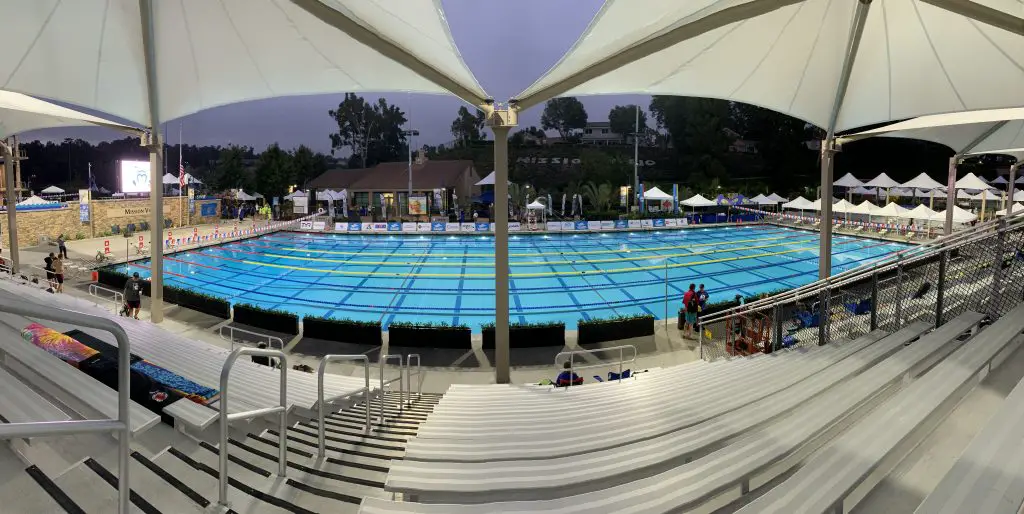
Not only should you not be late. You should arrive early, too. This gives you enough time to change into your swimsuit and get ready to get into the water. Ideally, you should do some stretching before you start to swim.
When you arrive early, you can do all this and mentally prepare for your swim tryouts. It sounds silly, but much like a test, you run through key elements just before the start. And much like taking a test, you should mentally prepare.
If you arrive late, it not only leaves a bad impression but also leaves you scrambling to play catch up with everyone else.
Arrive early to have a chance to talk with other swimmers who plan to try out with you. You’ll make some friends along the way!
9. Be Aware of Your Nutrition

DISCLAIMER: I’m not a doctor or nutritionist. These suggestions shouldn’t be taken as medical or nutritional advice. They are only my thoughts and opinions. Work with your doctor or a nutritionist to build out the best nutrition plan for you.
It’s often overlooked, but I tell swimmers and parents alike that they need to have a healthy diet. Just because swimmers burn hundreds of calories at every practice doesn’t mean we can eat anything.
If you don’t eat the right food before practice or tryouts, you might find yourself struggling in the water. You either feel sluggish or that you have no energy.
Stay away from sugar, juices, sodas, candy, and sweets. Instead, reach for some water, lean protein such as chicken or fish, whole grains, and fruits and vegetables.
Lastly, make sure you eat something directly after your practice or workout. Ideally, this should be a small, protein-packed snack about 5 minutes or after practice. This helps your muscles recover better.
10. Have the Proper Gear
Before and during tryouts, you should make sure you have the proper gear. I recommend the following as a minimum:
Swimsuit
This should go without saying, but I’ve seen people show up for tryouts without a swimsuit. It’s important to pick a swimsuit meant specifically for lap swimming and not one for playing/lounging at the pool. Just as you shouldn’t attempt to swim in trunks or t-shirts, as these can weigh you down in the water.
If you genuinely want to a shirt because you don’t feel comfortable in just a swimsuit, please consider a rash guard or an actual swim shirt. They’re safer for you to wear in the pool compared to a shirt
Related article: Answering Your Questions About Rash Guards
Goggles
:Speedo Vanquishers or Arena Tracks are my go-to goggles for swimming. They’re affordable and fit most faces without much adjusting. You can find Vanquishers at most sporting stores during the summer months. You can also find both sets of goggles online through Amazon or SwimOutlet.
If you wear glasses, SwimOutlet has Prescription goggles, which I used for my high school and college swimming years.
Swim Cap
Caps help keep hair out of your eyes when swimming. The two best types of caps for swimming are latex and silicone caps. Each has its pros and cons, which I cover in this post Your Swim Cap Guide. I prefer silicone caps because they don’t pull my hair as much as the latex kind.
Swim Bag or Backpack
Using a swim bag keeps everything together and you can also store your personal belongings and other items in your bag as well. My favorite and current swim bag is the Arena Team Backpack. It’s big enough for everything I need.
Towel
Don’t forget your towel! After tryouts, you’ll want to be able to dry off and change out of your suit. A microfiber towel or regular swim towel will do the trick 🙂
Related articles:
- How to Pick the Right Swim Goggle
- How to Fix Common Swim Goggle Problems
- 6 Reasons You Should Wear a Swim Cap
- Why Your Swim Cap Falls Off
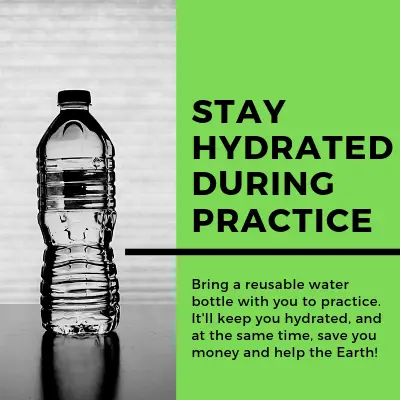
A follow up note on swim gear
You don’t need a high-tech racing suit that you might see at swim meets. Just as you don’t need expensive goggles. A simple practice suit and goggles will work just well for training and tryouts.
I recommend getting your swimsuit from dedicate swim shops, such as SwimOutlet, as they carry a wider selection. It’s also easy to filter swimsuits based on purpose, such as training or lap swimming.
I also highly encourage you to wear and train with your suit, goggles, and cap a few times before wearing them to tryouts. You’ll feel most comfortable in these and they’ll be familiar. Ideally, what you’ve been practicing in prior to tryouts is what you should wear at tryouts itself.
Bonus Advice!
Tryouts will help swim coaches determine what swim abilities you have in addition to the rest of the swim team. The coach will then place you in the correct team, group, or level that’s best for you. You may find that you’re not placed exactly where you want to be but don’t let that discourage you.
You’ll be placed with swimmers of similar abilities to you which can help you grow and also challenge you. As you practice more, you can also move up into the faster team or level.
Lastly, remember that for most swim teams, you already need to know how to swim at a minimum. A swim team isn’t a place to learn how to swim. If you don’t know how to swim, I recommend taking lessons first with a qualified instructor or coach.
What to Expect at a Swim Tryout
What’s expected at swim team tryouts will vary by team. In general, though, you can expect the coach to test your swimming skills at tryouts. Expect the coach to look at:
- How many of the four strokes can you complete?
- Can you do a flip turn?
- Do you know how to do an open hand turn?
- How does your start look?
- How many laps can you swim?
- Can you swim a certain distance/stroke in a predetermined time?
For more on what to expect at a swim team tryout, check out our other posts: What to Expect at a Swim Team Tryout and What do Do Coaches Expect at Swim Team Tryouts.
Bonus Content:
How to Join a Swim Team: With so many different teams and swim programs out there, how do you know which one to join? And how do you join a swim team?
5 Things to Know Before Joining a Swim Team: Joining a swim team comes with benefits and challenges. Avoid these five things that seem to catch most new swimmers off guard when they first join a swim team.

Want to Improve at the Pool?
Join swimmers and swim parents to receive my free newsletter and receive a free Swimming Glossary e-book as a thanks!
Every month you’ll receive tips and coaching to help you find success at the pool.
About
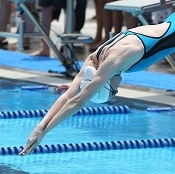
Chevron is a current competitive swimmer with almost 20 years of experience at the local, national and international level. A current USA Swimming and US Masters Swimming athlete, she’s committed to providing guidance to all levels of swimmers and believes that everyone should know how to swim.
This was super helpful, thank you!
You’re welcome! 🙂
This was absolutely fantastic!!!!!!